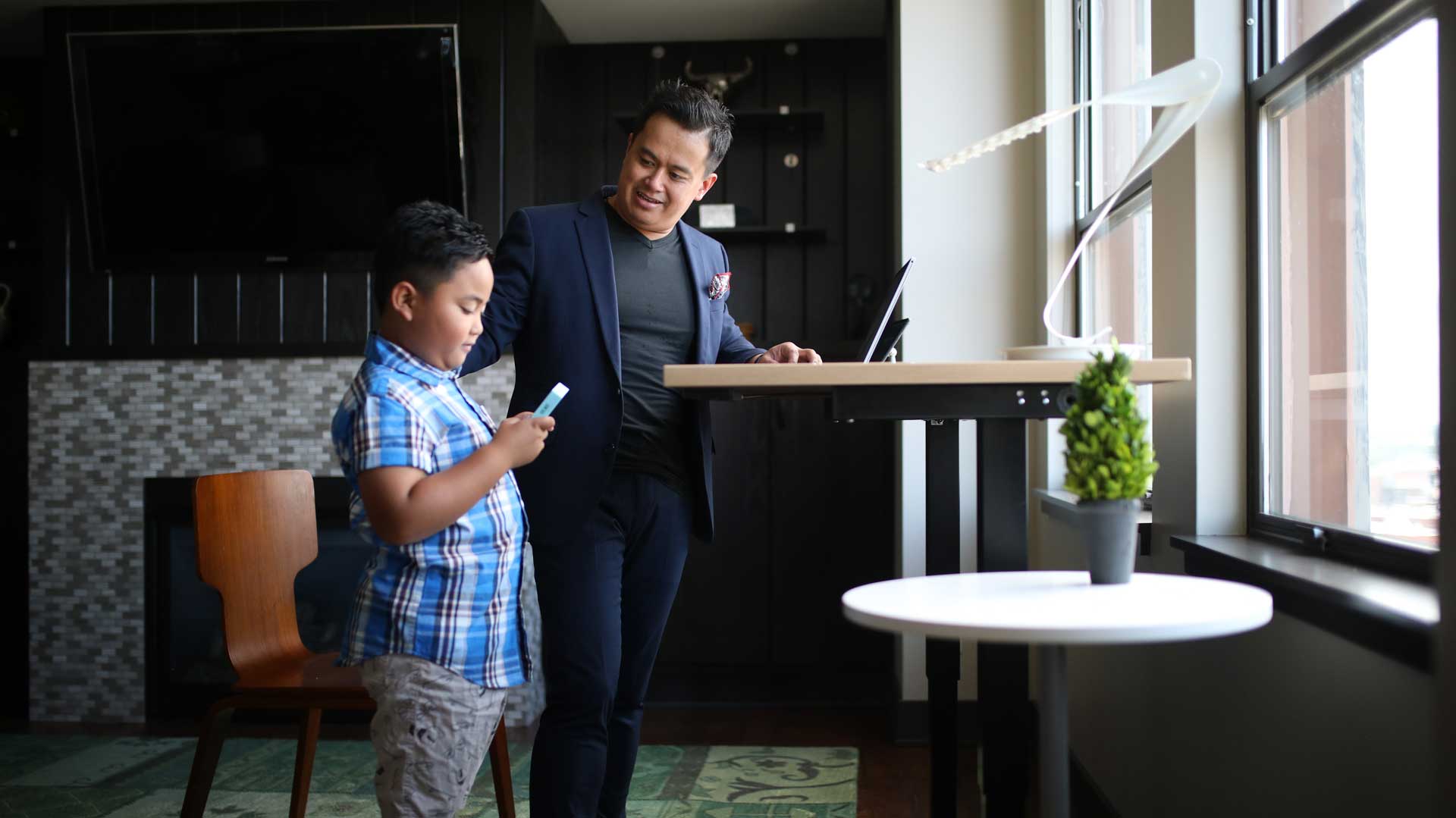
Less than a year ago, if anyone said that most of us would suddenly be working from home in 2020, it would have been hard to imagine. Yet here we are, on a first-name basis with the boss’s dog. And for many, home is exactly where we will stay for a while.
Even before the pandemic brought us all into the grand virtual workplace experiment, away from our conference rooms and ergonomic desks, working from home was becoming more common. Suddenly, though, when the pandemic drove nearly 1/3 of the American workforce remote, it was a case of sink or swim. Now that the initial adjustment is long over, one thing is clear:
Remote work is here to stay.
While many companies have welcomed workers back to the office, a good share have not. According to a survey by research firm Gartner, 74% of organizations now plan to permanently shift some employees to remote work. Before the pandemic, less than 5% of the workforce was estimated to work from home. By the time it’s over, consulting company Global Workplace Analytics estimates that 30% of all workers will.
Once defined by their flagship work campuses, tech companies in particular have found new flexibility with WFH arrangements. Facebook recently told employees they could work from home at least until 2021, and they expect that half the Facebook workforce will be remote by 2030. Twitter and Square announced that workers can remain remote indefinitely. The trend extends well beyond Silicon Valley. According to Gartner, larger firms expect 50% or more of their workforce to continue WFH at least part-time.
After an abrupt introduction to remote work, companies and workers have now had some time to adjust and learn–
What we’ve lost and what we’ve gained.
In the journey from office to virtual workspace, we have accumulated some losses. Our morning coffee discussions. The chance meeting in the hallway with a key coworker. Valuable bits of information about clients, relationships, or opportunities that we may not think to seek out. Annual client get-togethers and industry training opportunities. Spontaneity.
In all fairness, there have been gains as well. In place of these losses comes the increased authenticity of working from home. Being seen in our own homes, perhaps in our regular clothes with occasionally messy hair, tends to increase the level of vulnerability and trust in our working relationships. In the best case scenario, companies have had an opportunity to show more flexibility, and to develop policies that address employee wellbeing.
The virtual workplace is as good as we make it.
The sudden switch to working from home has given us a better understanding of how we work best, and why. As we have struggled to define and create work/life balance, we have also come to better understand how to achieve our best productivity, as well as how to create camaraderie that can be a vital part of the workplace. Several important themes have emerged in the quest to help workers increase their success and wellbeing in virtual offices.
Make meetings work.
In the initial months after office shut-downs, many found that meetings were taking most of the day. By now, some best practices have evolved to help. We can get familiar with the tips and tricks of the videoconferencing software. Keep meetings a little shorter than face-to-face, and don’t spend too much time on personal chit-chat. And if social meetings are part of your workplace culture, continue to schedule casual lunch, coffee, or happy-hour meet-ups, as long as they’re optional.
Craft a first class home office setup.
Anyone who set up a hasty temporary WFH space has by now seen the need for a “real office” at home. These virtual workplaces share some minimum requirements to be a workable solution in the longer term:
- Space. Ideally a room or space should be set aside for either permanent or semi-permanent use as a dedicated virtual workspace. A room with a door can help ensure a certain level of privacy and quiet.
- Equipment. All the necessary technical equipment may include a phone, laptop with a webcam/microphone and all necessary software, high speed internet, printer/scanner, a monitor, keyboard and mouse for ergonomics, and possibly headphones.
- Chair. It’s time to move beyond the sofa or bed, or even a regular kitchen chair.
- An ergonomic desk. It doesn’t take long to tire of a laptop on the kitchen counter, and most find that settling into the WFH lifestyle for a longer haul requires a longer term solution. An ideal home office desk would be a height adjustable workstation that allows shifts in posture throughout the day.
- Comforts of home. Warm soft lighting, plants, and a music device put the “home” in “home office.” Little investments bring personality to your space and boost your sense of wellbeing.
Be realistic about how you work from home. For people who often answer a few emails while relaxing in the evening, a height adjustable lounge table next to the sofa can make the task much more comfortable.
Develop successful virtual office habits.
Just as there’s no one-size-fits-all for office environments, there’s no one-size-fits-all for virtual offices. However, tips abound to make sure that remote workers can be as productive and successful as traditional office workers.
Set a schedule of availability. Put it into your calendar and your voicemail message if you need to. Some companies have clear expectations, with set hours when workers should be available, or use of calendars to block off unavailable time. Some have a culture that expects a certain amount of availability outside of set work hours. Whatever the expectations, clarifying them and adhering to them becomes more important for virtual workers.
Find ways to move around. Develop a schedule to keep you out of the kitchen and to keep you moving. Try a sit-stand desk so you can stand for meetings, sit for email. However you schedule your day, incorporating movement helps transition from one activity to the next and maintain mindful productivity.
We have come a long way toward a virtual workplace.
Companies have had to re-envision how to meet clients and prospects through videoconferencing, and how to use social media for publicity and online marketing. IT departments stepped up quickly to changing practices to support increasing demand for videoconferencing and IM software. Policies have changed to make sure important information is communicated transparently to everyone, whether that’s through email updates or team collaboration software and workflows.
Even as some companies and individuals drift back to the traditional office environment, these new processes and technologies are likely to remain in place. If a good portion of the workforce still works remotely, then it’s likely that changes made to support virtual workers will remain. Our success in these remote workplaces hinges on continuing commitment to examining what works best.









